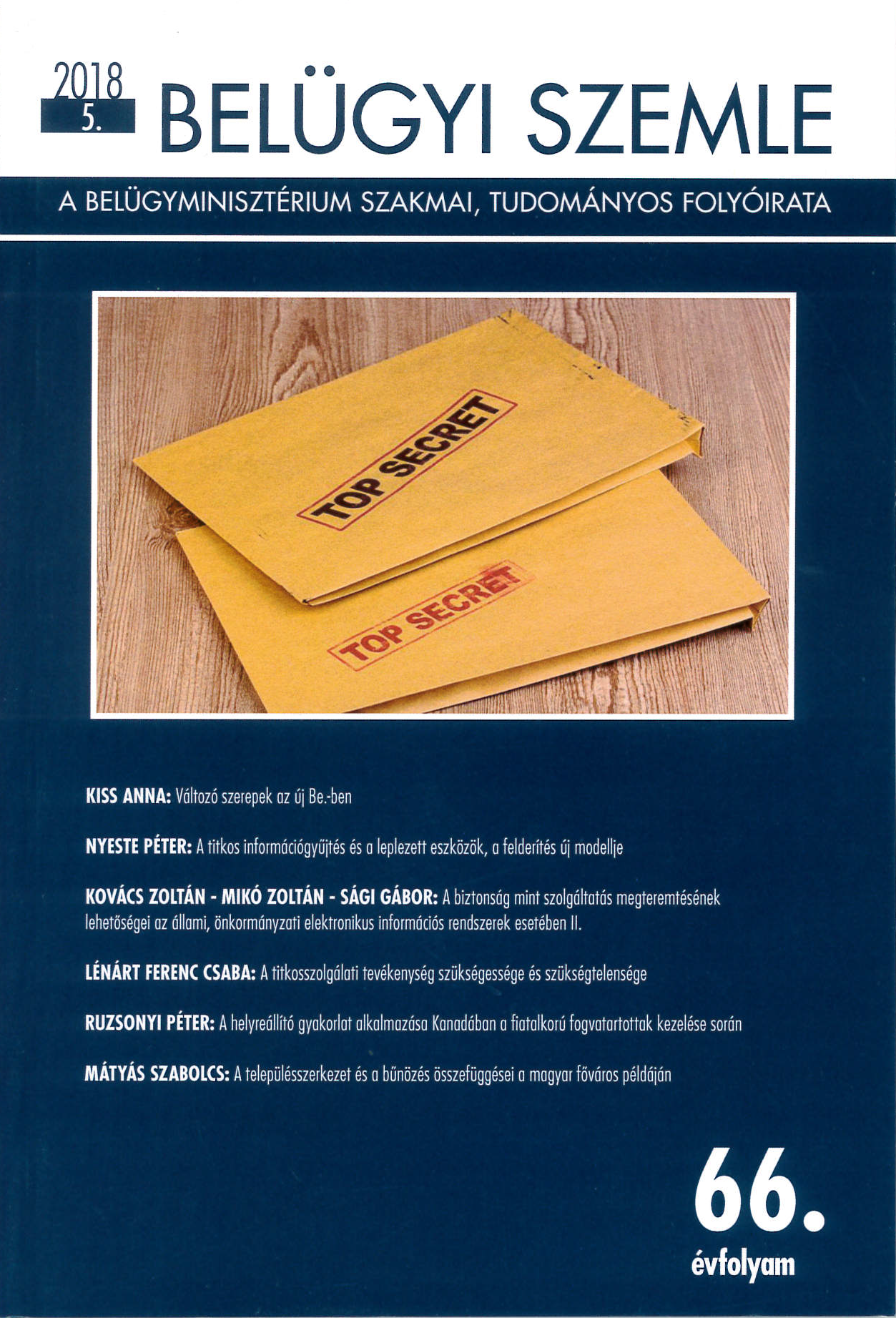Keywords
criminality
settlement structure
analysis
settlement structure
analysis
How to Cite
Settlement structure and criminality: the case of the Hungarian capitol. (2018). Academic Journal of Internal Affairs, 66(5), 105-115. https://doi.org/10.38146/BSZ.2018.5.6
Abstract
Using the example of Budapest, the author provides a social and geographical analysis of how crime and is settlement structure correlates.
Downloads
Download data is not yet available.
Similar Articles
- Zsuzsanna Hornyik, Crime prevention-based society , Academic Journal of Internal Affairs: Vol. 68 No. 12 (2020)
- Edit Balláné Szentpáli, Budget fraud reflected by statistical data from the regime change to nowadays , Academic Journal of Internal Affairs: Vol. 68 No. 1 (2020)
- István Kovács, Comparative analysis of the 1853’s Sicherheits Buch of Győr and the medical prostitution booklet of nowadays , Academic Journal of Internal Affairs: Vol. 67 No. 10 (2019)
- Szabolcs Mátyás, Gyula Csege, Empirical research results of CCTV systems from the aspect of subjective safety feeling , Academic Journal of Internal Affairs: Vol. 67 No. 10 (2019)
- János Sallai, Judit Borszéki, The beginnings of international police cooperation , Academic Journal of Internal Affairs: Vol. 70 No. 5 (2022)
- Attila Kovács, Policing in Fehérgyarmat , Academic Journal of Internal Affairs: Vol. 65 No. 7-8 (2017)
- Zsuzsanna Végh, Notes on conference on the criminal effects of migration , Academic Journal of Internal Affairs: Vol. 65 No. 4 (2017)
- Miklós Lévay, On the Fourteenth United Nations Congress on Crime Prevention and Criminal Justice; the Kyoto Declaration , Academic Journal of Internal Affairs: Vol. 70 No. 7 (2022)
- Zsuzsa Piskóti-Kovács, Possible new generation of crime maps: application of surface models to investigate crime in the northern Hungarian region , Academic Journal of Internal Affairs: Vol. 64 No. 11 (2016)
- Tibor Bánáti, Ivett Nagy, Ágota Németh, Data about data, i.e. the possibilities of analyzing metadata, with a special focus on organized crime , Academic Journal of Internal Affairs: Vol. 70 No. 7 (2022)
You may also start an advanced similarity search for this article.
Most read articles by the same author(s)
- Szabolcs Mátyás, Ágnes Nikolett Tóth, Zoltán Bujdosó, Dénes Lóránt Dávid, Adol Collins Fredrick Gogo, The Role of Sports Policing and Tourism Safety at the Summer Olympics , Academic Journal of Internal Affairs: Vol. 71 No. 1 (2023)
- Szabolcs Mátyás, Gyula Csege, Empirical research results of CCTV systems from the aspect of subjective safety feeling , Academic Journal of Internal Affairs: Vol. 67 No. 10 (2019)
- Szabolcs Mátyás, László Frigyer, Géza Prilenszky, The role and importance of virtual currencies in asset recovery , Academic Journal of Internal Affairs: Vol. 69 No. 3 (2021)
- Andrea Szabó, Szabolcs Mátyás, The Chinese solution in the education of law enforcement officers , Academic Journal of Internal Affairs: Vol. 68 No. 3 (2020)
- Szabolcs Mátyás, Prisoners’ approach to CCTV , Academic Journal of Internal Affairs: Vol. 68 No. 2 (2020)
- Szabolcs Mátyás, Terminological notes in criminal geography , Academic Journal of Internal Affairs: Vol. 65 No. 9 (2017)
- Szabolcs Mátyás, János Sallai, Tibor Szarvák, Miklós Tihanyi, Vince Vári, Towards a new paradigm: trust and security , Academic Journal of Internal Affairs: Vol. 67 No. 2 (2019)
- Szabolcs Mátyás, The History of Law Enforcement in Hungary , Academic Journal of Internal Affairs: Vol. 66 No. 11 (2018)
- Szabolcs Mátyás, János Sallai, Horst Herold, the founder of modern criminal geography , Academic Journal of Internal Affairs: Vol. 67 No. 3 (2019)

